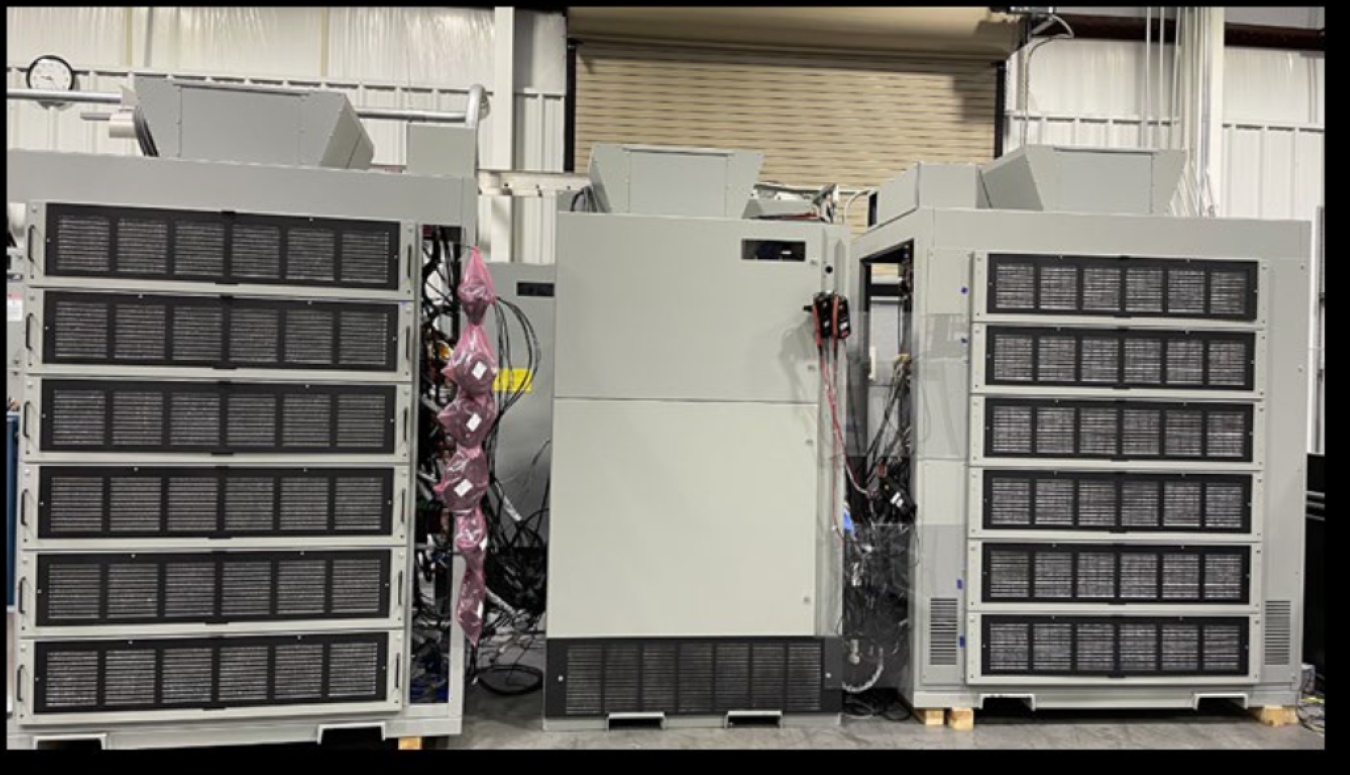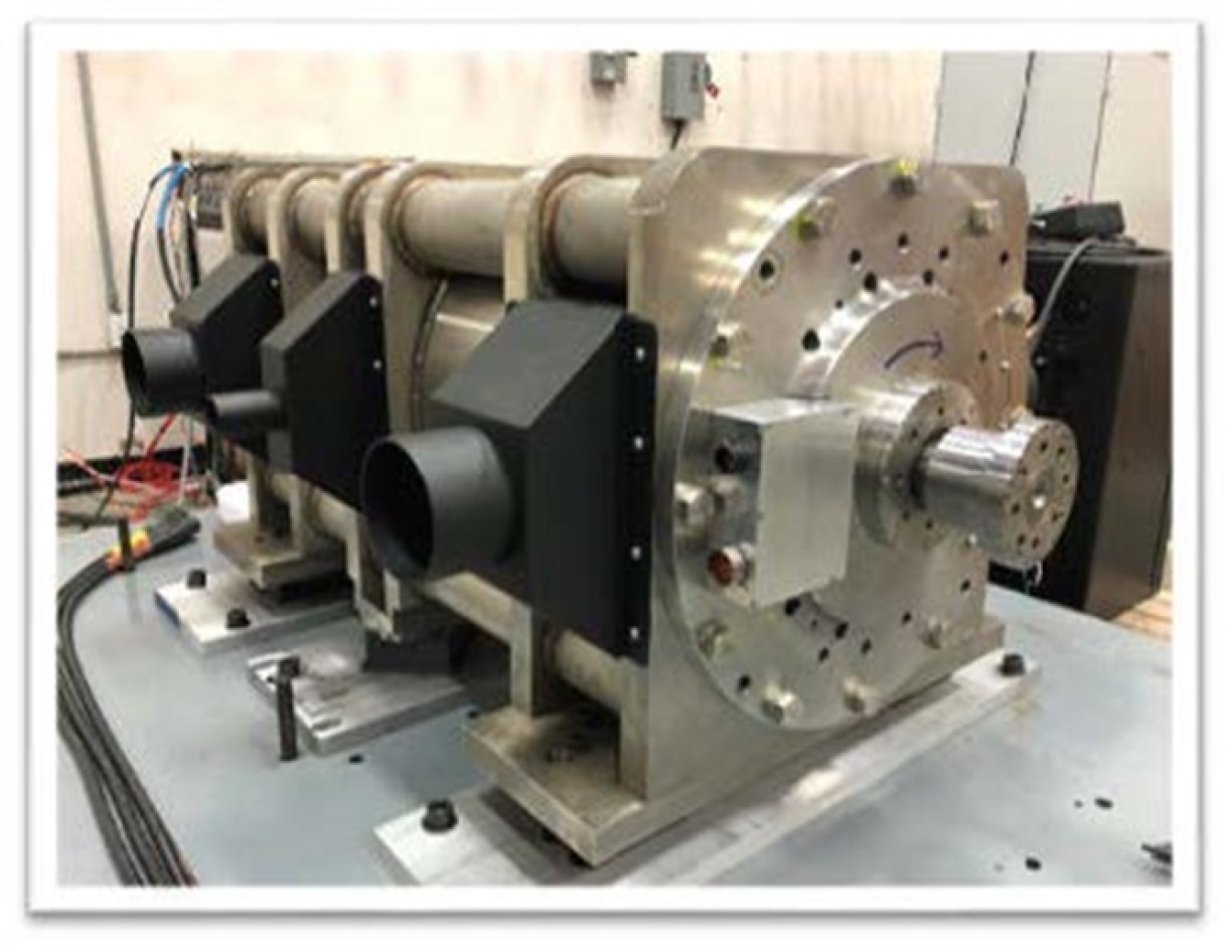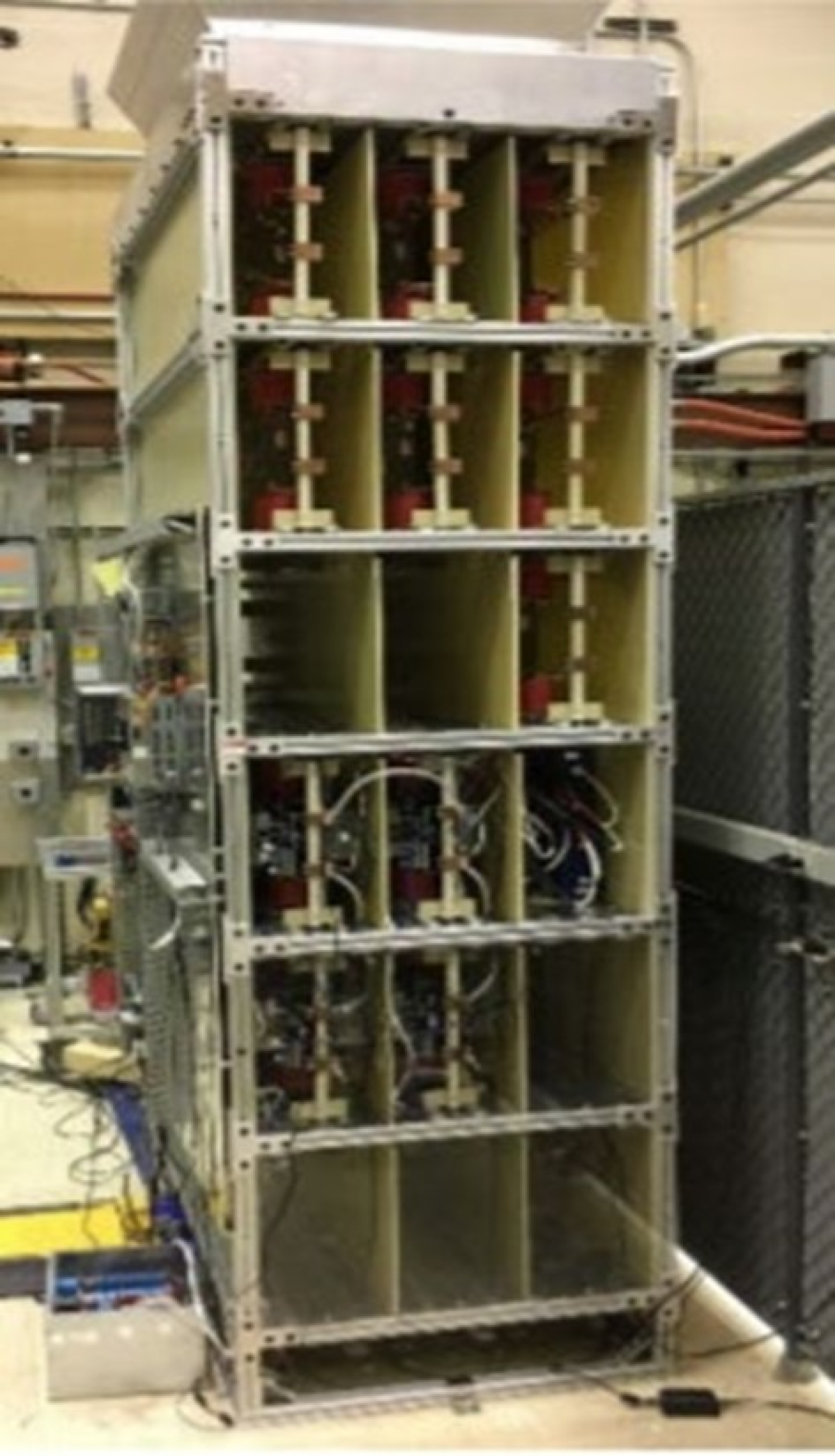From research to development, six university and company teams are changing the way industry powers its operations by improving electric machines, superconducting wires and other technologies key to American manufacturing.
Advanced Materials & Manufacturing Technologies Office
October 13, 2022From research to development, six university and company teams are changing the way industry powers its operations by improving electric machines, superconducting wires and other technologies key to American manufacturing. Electric motors, used widely throughout the industrial sector, power heavy machinery as well as common processes such as heating and cooling systems, heavy-duty equipment, crushers, compactors, pumps, and hydraulics. Additionally, they are critical for use in electric power generation, creating clean electricity from wind, solar and other renewable power sources.
The teams engaged with the U.S. Department of Energy’s (DOE) Next Generation of Electric Machines (NGEM) program in the Advanced Materials and Manufacturing Technologies Office (AMMTO) collaborated across research, development, and demonstration. The NGEM program leverages technological advancements in Silicon Carbide (SiC) power electronics and other materials for electric motors to develop efficient drive systems for industrial applications. In addition to SiC that enables higher voltages in electric machines, new materials like superconductors, soft magnetic nanomaterials, and advanced insulators are being studied. These innovations reduce energy, lower cost, and lower carbon emissions across various industries as they electrify manufacturing processes.
These innovators are finding ways to improve energy efficiency and reduce costs of electric machines. They are also making strides in developing and testing new technologies for widespread industry adoption.
UH graduate students are holding spools of long superconductor wires developed and scaled in the Advanced Manufacturing of High Performance Superconductor Wires For Next Generation Electric Machines project. In the background is a machine that was designed, built and used by the team to produce the long superconductor wires.
The University of Houston (UH), Selva Research Group is leading a team of innovators to build cheaper and more efficient superconductors—materials that can change the way electricity is generated, stored, transmitted and used every day. For decades, the largest barriers to improving superconductors have been performance and cost. The team solved both challenges.
UH developed a new tool to manufacture and scale superconductor wires that performed better at half the cost than copper wires, which are most commonly used today. The advanced metal organic chemical vapor deposition (MOCVD) technology enables fabrication of superconductor tapes with two times the thickness of the superconducting films previously possible with five times less cost. Using this MOCVD technology, the team fabricated a 50-meter-long wire (the initial length necessary to demonstrate scalability of the technology) -- resulting in four times the current carry capacity at half the commercial cost. TECO Westinghouse designed the motor to test the wires, E2P Solutions designed and tested the rotor pole coil, and SuperPower Inc. contributed to the templates needed to fabricate the wires.
From May 2017 through July 2022, the University of Houston launched this research with DOE funding of $4.5 million through the NGEM program. According to Venkat Selvamanickam, Ph.D., the professor who leads the research team:
“The DOE-AMO project has propelled the Selva Research Group at the University of Houston from early-stage innovator of lab-scale superconductor wire technologies to a bona fide demonstrator of the transition from short samples to pilot-scale manufacturing. Our researchers, particularly graduate students, have shown that advanced manufacturing institutes in academia are potent mechanisms to de-risk scale-up challenges to accelerate the adoption of new technologies by industry. The advanced superconductor wire technology developed and scaled up by our team will broadly benefit many clean energy applications such as highly-efficient power cables, motors and generators, high-power wind turbines, and compact fusion reactors; future clean-tech transportation such as electric aircraft; and powerful magnets for medical imaging and cancer therapy.”
The team is currently in discussions with industry to scale up the technology for full-scale manufacturing. Advanced Materials Pioneers (AMPeers), is currently using the high-performance superconductors developed in the AMMTO project for round superconductor (STAR®) wires. As part of an Office of Science Small Business Innovative Research (SBIR) grant, AMPeers, along with UH, is producing 50-meter-lengths of high-performance superconductors made by Advanced MOCVD scaled up in the AMMTO project, for use in accelerators for high energy physics. The technology is also being adopted by another project supported by DOE’s Advanced Research Projects Agency-Energy (ARPA-E) on advanced superconductors for fusion.
Read more about the team’s findings here.
The University of Houston’s success is just one example of how government partnerships spur innovation in research and development. Similar innovative partnerships from the NGEM program are working on improving the performance and cost of electric motors, wind power connectors, and heating and cooling systems to develop future energy efficient applications. Read more about their work below.
***

Toshiba North America Product Prototype.
A team from Ohio State University (OSU) worked to develop a next-generation medium voltage (MV) motor drive for use across a range of industrial applications. Historically, these MV motor drives have low industrial adoption primarily due to high cost, large physical footprint, and high energy losses. OSU’s team addressed this challenge by focusing on the development of advanced pumping, fan, and compressor technologies that rely on existing silicon-based technologies, and creating a first-of-its-kind megawatt-level silicon carbide (SiC)-based MV motor drive. The team’s high voltage drive system has energy savings potential of up to 23 million kilowatt-hours, and annual greenhouse gas (GHG) emissions reduction by 16,000 metric tons - equivalent to the carbon emissions produced by roughly 3,400 passenger vehicles yearly. The team successfully worked to commercialize their technology, partnering with Toshiba to produce a product prototype for industrial use of the megawatt level SiC based motor drive. These prototypes are currently being transitioned to industrial sector deployment by Toshiba.

Eaton Corporation NGEM Permanent Magnet.
A team including Wolfspeed Inc., Calnetix Technologies, Carnegie Mellon University, Novus Engineering, and PWP, Eaton Corporation developed and tested an integrated drive package for the NGEM portfolio, including a 10 kV SiC variable speed drive (VSD) and high-speed megawatt-rated motor. Intended for use in gas compression, the integrated MV motor drive uses a high-speed permanent magnet machine to significantly improve the drive efficiency and power density of the NGEM. The team was able to reduce their motor size by five times over that of existing drive packages, reducing energy consumption per system by 20-40%, and eliminating the large and expensive mechanical gear box needed on current low-speed motors. These improvements resulted in a significant value proposition in a range of commercial applications where power density is at a premium, such as oil and gas platforms or subsea processing applications. The team continues to work towards commercialization, focusing on improvements for custom-molding of motor components, as well as improvements in screening and module packaging.

GE Wind Power Converter.
Through the NGEM portfolio, GE Global Research partnered with the University of Tennessee – Knoxville and Virginia Tech to redefine power converters for wind turbines. The team took single module systems for wind turbines that rely on traditional silicon-based technologies and developed a multi-level SiC-based motor drive wind power converter. This electric drive can be integrated with existing wind turbine generators to improve performance, increase energy efficiency, and lower the turbine’s overall physical footprint. The device reduces the weight and size of wind power converters, using newly developed technologies and design approaches to strengthen system resiliency and reliability. The inventive use of SiC provides an additional advantage in both system-level efficiency and lower costs compared to traditional silicon-based devices. Additionally, this project produced a key enabling technology that can be used in a variety of industrial and aerospace applications, and the GE team continues to work with the NASA Glen Research Center.

TWMC NGEM High Speed Motor Generator.
Under AMO’s NGEM program, Clemson University and TECO Westinghouse Motor Company (TWMC) worked together to develop, manufacture, and test a fully integrated next-generation high-speed drive system. Existing high-speed drive systems are complicated because a third party has to integrate separate low voltage drives with the high-speed motors. The team addressed this challenge by streamlining the process, producing their own fully integrated product and merging the motor and drive system together within a single supplier. The new high-speed drive system can operate with low power losses at high switching frequency. Clemson University’s eGrid Center tested the performance of the new technology.

Calnetix SiC MV Motor Components.
Making SiC more energy efficient is a key focus for the NGEM portfolio. Calnetix and Wolfspeed, CTM Magnetics, BRG Machinery, Electric Motor and Contracting Co., Laser Technologies, and Kencoil addressed this challenge by matching SiC technology with low induction motors, designing, building, and testing a MV HSPMM and VSD that incorporated next-generation 10kV SiC modules. Their HSPMM invention allowed for higher efficiency within a smaller operating space and maintenance free operation, while their SiC modules enabled higher voltage operating conditions and improved efficiency within the smaller operating space. These innovations have significant commercial value, particularly for device manufacturers who are continuing to develop and fine-tune the reliability and cost of SiC devices.
***
The Advanced Materials and Manufacturing Technologies Office (AMMTO) supports the advancement of technologies to make the U.S. manufacturing sector more competitive and build a clean, decarbonized economy. AMMTO has three major program teams: next-generation materials and processes, secure and sustainable materials, and energy technology manufacturing and workforce. These programs will meet our goals to manufacture clean energy technologies domestically, develop secure and sustainable supply chains, and support a skilled and inclusive manufacturing workforce.
Read more about AMMTO here.

